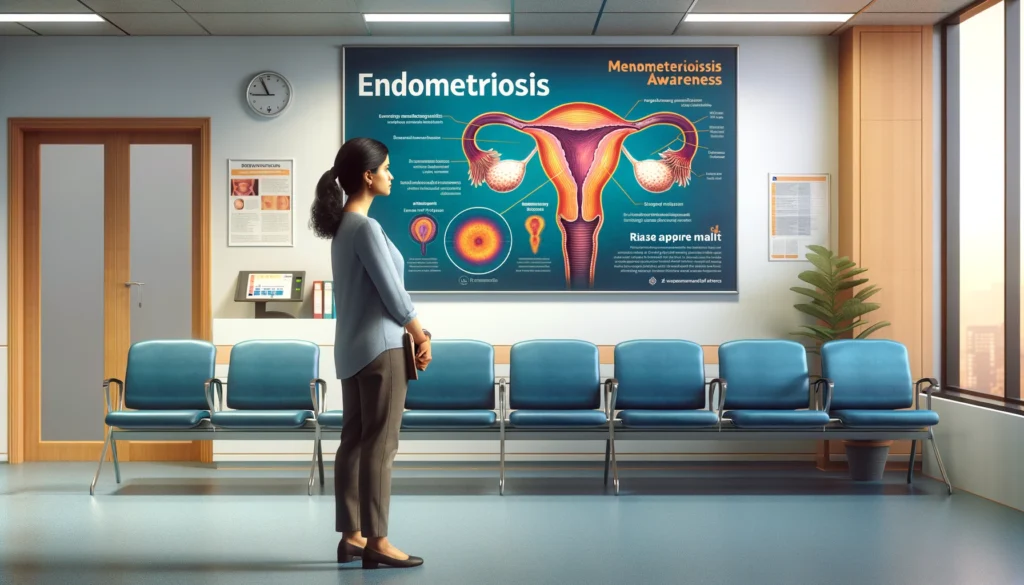Understanding Endometriosis: Insights & Implications for Women’s Health
Endometriosis is a condition shrouded in complexity, profoundly affecting the lives of women around the globe. It is not only a source of severe pain and discomfort but also a formidable barrier to fertility, presenting significant challenges to those who dream of motherhood. This article aims to shed light on the prevalence of endometriosis, its intricate relationship with infertility, and the broader implications it holds for women’s health. By doing so, we emphasize the critical need for ongoing research, improved treatment options, and supportive healthcare policies that can make a difference in the lives of those battling this condition.
– Dr. G. A. Ramaraju DNB PhD, Consultant Krishna IVF Clinic

Prevalence of Endometriosis
Endometriosis is far from being a rare condition, affecting an estimated 10% of women during their reproductive years. This equates to millions of women worldwide, making endometriosis a significant concern for both individuals and healthcare systems. The economic and emotional toll it exacts is immense, underscoring the urgency of addressing this issue head-on.
The Link Between Endometriosis and Infertility
The path from endometriosis to infertility is a well-documented one, with approximately 30% to 50% of women with endometriosis experiencing difficulties in conceiving. This stark statistic highlights the profound effect endometriosis can have on a woman’s ability to become pregnant, emphasizing the need for specialized care and treatment strategies.
Key Findings on Fertility Impacts
- • Antral Follicle Count (AFC): Women with endometriomas often show a reduced AFC, signaling a compromised ovarian reserve.
- • Ovarian Reserve: Unoperated endometriomas and lower levels of anti-Müllerian hormone (AMH) are indicators of diminished ovarian reserve, a critical factor in fertility.
- • IVF Outcomes: Endometriosis can complicate in vitro fertilization (IVF) efforts, leading to higher cycle cancellation rates and reduced efficacy of ovarian stimulation.
- • Oocyte and Embryo Quality: The quality of oocytes and embryos may be adversely affected in women with endometriosis, further complicating fertility treatments.
- • Endometrial Receptivity: The impact of endometriosis on the endometrium, and consequently on implantation success rates, remains a topic of ongoing research and debate.
- • Type and Stage of Endometriosis: The extent to which endometriosis affects fertility varies widely depending on its type and stage, with conditions like adenomyosis adding another layer of complexity.
Epidemiological Insights
Research efforts, including prospective cohort studies and cross-sectional surveys, have consistently demonstrated a link between endometriosis and infertility. These studies offer invaluable insights into the prevalence and impact of endometriosis, informing both clinical practice and policy-making.
Moving Forward: Research and Policy
The intricate dance between endometriosis and infertility underscores the critical need for further research to unravel the complex mechanisms at play. As we deepen our understanding of this condition, policymakers and healthcare providers must work together to improve access to specialized care, invest in innovative treatment modalities, and develop supportive policies that acknowledge and address the challenges women with endometriosis face.
In Conclusion
The journey to fully understand and effectively manage endometriosis is ongoing. It demands a concerted effort from researchers, clinicians, policymakers, and patients. As we move forward, we aim to illuminate the path to better health and well-being for women affected by endometriosis, ensuring they have the support and resources they need to lead fulfilling lives.
References:
- Becker CM, Bokor A, Heikinheimo O, Horne A, Jansen F, Kiesel L, et al. ESHRE guideline: endometriosis. Hum Reprod Open 2022;2022(2):hoac009.
- Bonavina G, Taylor HS. Endometriosis-associated infertility: from pathophysiology to tailored treatment. Front Endocrinol 2022;13:1020827.
- Nisolle M, Donnez J. Peritoneal endometriosis, ovarian endometriosis, and adenomyotic nodules of the rectovaginal septum are three different entities. Fertil Steril 1997;68(4):585–96.
- Zondervan KT, Becker CM, Missmer SA. Endometriosis. N Engl J Med 2020;382(13):1244–56.
